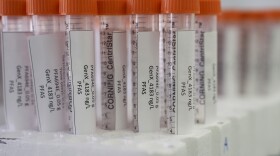-
Suffolk County is doubling down on protecting its most vital resource, clean water. The U.S. Geological Survey will monitor five rivers across the county for potential toxins from stormwater runoff.
-
Long Island Sound, once plagued by pollution and dead zones, has seen major improvements in water quality over the past two decades. While challenges remain, groups like Save the Sound say cleaner water, healthier habitats and engaged residents are signs of progress.
-
The Suffolk County Water Authority says all of its drinking water wells are now in compliance with new federal standards for PFAS — harmful "forever chemicals" linked to serious health risks.
-
Long Island Sound is central to life on the coast of Connecticut and northern Long Island. Scientists at Clark University are looking at ways residents can help keep it clean and how to convince them to do so.
-
Save the Sound, who created the tool, said it will help policymakers and local governments make decisions on how to protect the Long Island Sound.
-
Last year, an invasive species of Hydrilla was discovered in Gardner Lake, prompting Connecticut legislators to propose building boat washing stations with high-pressure hot water or compressed air to prevent its spread to other bodies of water.
-
The state passed a sweeping wetland protection law in 2022. Now, regulations are being finalized before taking effect on Jan. 1. The New York-based advocacy group Nature Conservancy is pushing the governor to limit development in wetlands due to the critical roles they play.
-
Suffolk County voters have approved a sales tax increase to improve the wastewater and septic systems.
-
Fish kills, harmful algal blooms and oxygen-deprived “dead zones” affected almost all of Long Island’s bays and estuaries this summer, according to scientists who monitor water quality at Stony Brook University's School of Marine and Atmospheric Sciences.
-
Environmental nonprofit Save the Sound has released its annual water quality report card, grading more than 50 bays and four basins of open water in Long Island Sound. Scientists said the results are encouraging, but there’s still work to be done.
Play Live Radio
Next Up:
0:00
0:00
Available On Air Stations










